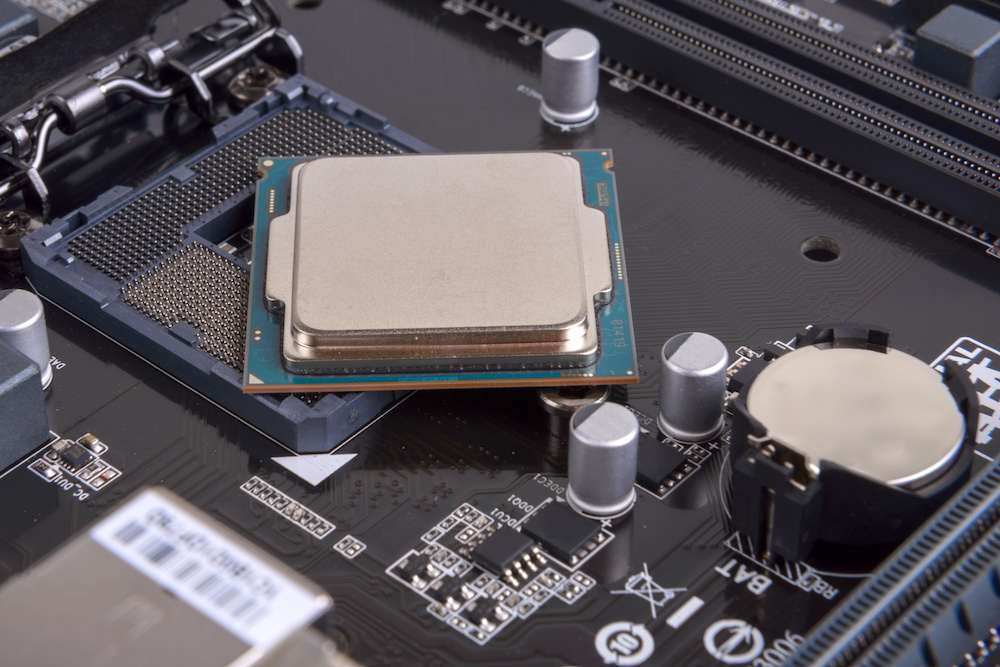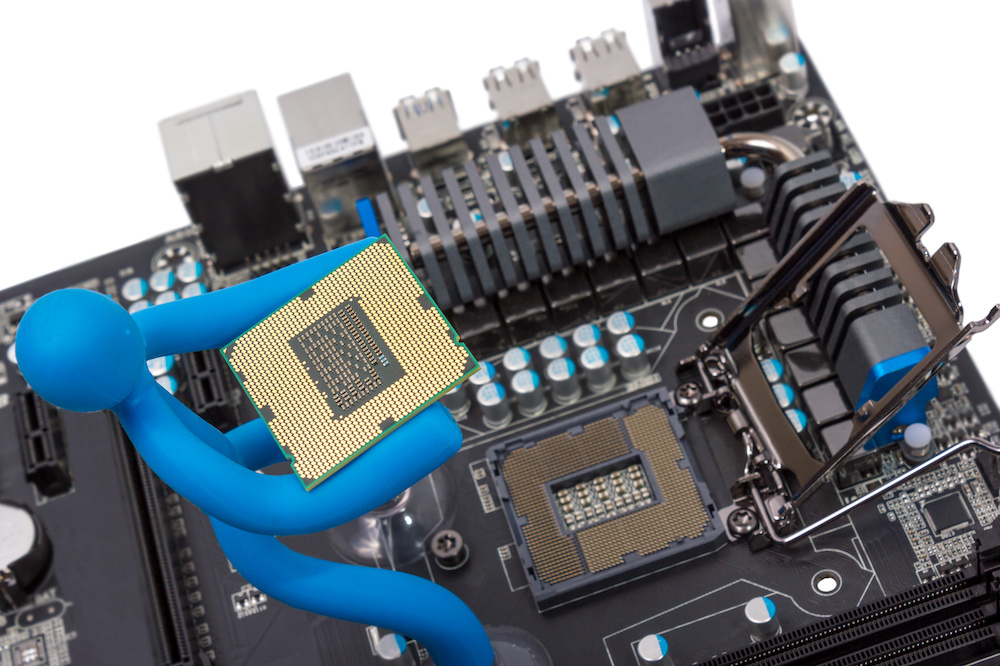Do Motherboards Have Integrated Graphics: The Answer and Other Related Facts
We may earn a commission for purchases using our links. As an Amazon Associate, we earn from qualifying purchases.
Do motherboards have integrated graphics? How do you know if your board has one?
Older models of motherboards have integrated graphics, but they are no longer a thing these days.
We’ll discuss why modern boards don’t have integrated graphics anymore.
We'll also provide you with options to enhance the graphics processing capability of your computer.
What Is Integrated Graphics?
Integrated graphics are essentially a graphics controller that shares memory with the CPU.
It's an economical alternative to stand-alone GPUs.
If you're on a low budget or only after an average computer that gets the job done, an integrated graphics unit makes a budget-friendly option.
It's the opposite of discreet graphics which are stand-alone units that have their own memory.
ALSO READ: Does Motherboard affect FPS?
Do Motherboards Have Integrated Graphics?
Onboard graphics were once soldered on motherboards.
Since the graphics processor is built into the board's chipset, there's no extra hardware required for your computer to produce an image or video display.
However, since these controllers rely on your RAM, they aren't as powerful as standalone GPUs.
Aside from the modest performance, built-in graphics units on motherboards cannot be upgraded or replaced.
As such, they don't perform well for tasks like video production and gaming.
Given those reasons, manufacturers moved the integrated graphics into the CPU instead.
Since the chip for an integrated graphics processor would have to be larger, it made more sense to just move it into the CPU.
Today, you'll see fewer high-end boards that feature integrated graphics.
Integrated Graphics in the CPU
Most mainstream desktop computers have integrated graphics, which are built into the central processing unit (CPU).
Whether you're running an Intel or AMD system, you’ll find the integrated graphics unit incorporated in the CPU.
Integrated graphics consumes a smaller amount of power, so it generates less heat.
That said, it also suggests lesser performance.
Having an integrated GPU is beneficial when you're performing simple tasks such as watching videos or surfing the web.
These activities don't require so many graphics capabilities to display high-resolution images.
If you're not a gamer or a video producer, and you mainly use your computer for simpler tasks, you'll be fine with a computer that has integrated graphics.
When Do You Need a Stand-Alone GPU?
The GPU, which is also called a video card, is a specialized electronic circuit designed to speed up the creation and rendering of images, videos, and animations.
Unlike an integrated graphics unit that shares memory with the CPU, the GPU has its own memory source.
High-end GPUs are most commonly used for gaming, ray tracing, graphic production, and cryptocurrency mining.
Things To Consider When Upgrading Your GPU
If you're thinking of updating your GPU, here are some factors to consider:
- Memory
One of the major benefits of a GPU is it doesn’t share the memory with your CPU.
For optimal performance, look for a GPU that has at least 4GB of memory.
If you are cranking it up for mega-gaming, you should go for a higher memory capacity, such as an 8GB GPU.
- Monitor Resolution
The minimum display resolution requirement for gaming is 1080 pixels.
If your monitor has 1440p or more, you need a higher-end video card to match it.
- Form Factor
The form factor refers to the size, shape, and other physical specifications of certain hardware components.
Graphics cards vary in terms of form factor.
Some models are compact and occupy less space inside your PC case.
That said, it doesn't necessarily mean they perform less.
- Refresh Rate
If your monitor has a higher refresh rate, you also need a GPU that matches its performance.
If your display has a refresh rate of 120 times per second, your GPU should also have a refresh rate of 120 frames per second (FPS.)
For GPUs, the higher the FPS, the better. A higher FPS rewards you with a smoother and clearer motion.
- Cooling
Another factor to consider when choosing a GPU for your computer is its cooling feature.
Like CPUs and motherboards, GPUs produce a lot of heat, which is displayed in the Thermal Design Power (TDP) value.
Smaller computers will do well on GPUs with low TDP values, while large computer systems will need GPUs with higher TDP values.
- Power
Aside from the TDP value, you should also check whether your power supply is enough to accommodate your graphics card.
Otherwise, you may need to invest in another decent power supply.
To find out how much wattage your power supply delivers, check its standard identification sticker.
There, you can identify how many 6-pin and 8-pin PCIe connectors are available.
- Bandwidth
Bandwidth is the amount of memory a GPU can access at any given time.
A GPU that has more bandwidth produces visuals with seamless clarity.
- Shader Cores
Bandwidth is greatly influenced by shader cores.
These are codes that work by manipulating an image before it is drawn to the screen.
Shader cores add variations of light and dark to 3D objects to bring graphics to life.
A graphics card that has more shader cores has faster and better image rendering capabilities.

How Do You Determine Graphics Card Compatibility With a Motherboard?
Installing a graphics card is easy, but making sure that it will work properly with your motherboard requires a great deal of research.
Below are some pointers when checking graphics card-motherboard compatibility.
Check the BIOS
Every motherboard has a built-in BIOS chip.
The BIOS is the board's firmware or software that runs at a lower level than your operating system.
It's your motherboard's brain, which tells your computer what drive to boot from, how much memory you have, and more.
Take note that the motherboard connects everything, so it needs to ensure that every component works properly.
When you connect a new card, the BIOS should detect and accept the card.
However, some manufacturers of pre-built PCs lock the BIOs.
This means that if your motherboard doesn't detect the addition of a new graphics card, it will be impossible for you to tweak the BIOS to accept it.
Check the Video Card Specs
Most GPU manufacturers will indicate what motherboards a GPU is compatible with.
You'll most likely find the details in the card's specifications.
If you can't find it there, you can always search online.
Alternatively, you can call a technical representative from your GPU provider.
Size Matters Too
You also need to make sure that your new video card will fit into your tower, along with the other components already connected to your motherboard.
If you're buying a powerful GPU, it will have its own fan and will therefore be bulkier than standard GPUs.
Thus, it's best to measure the height, width, and length of the available space for an extra video card.
How Do You Attach a GPU or Video Card To Your Motherboard?
Once you've found a compatible GPU, it's time to attach it to your motherboard.
As we mentioned earlier, installing a video card is a straightforward process.
You only need three things: a new graphics card, your PC, and a Phillips-head screwdriver.
Step #1: Turn Off and Locate
Before you begin, turn off your computer and unplug it.
Next, locate the long PCIe X 16 slot on your motherboard.
It's usually the first or second slot that is closest to the heat sink of your processor.
Step #2: Unplug and Unscrew
If you're replacing an existing graphics card, unplug the cables connected to it and unscrew it from the retention bracket.
Most motherboards have a small plastic latch on the end of the PCIe slot that locks the card in place.
Check if your board has one and make sure to unlock it so you can safely remove the old card.
Step #3: Install
At this point, you may now install your new GPU.
Insert the card into the slot firmly, and then push down the plastic lock to hold it in place.
Then, screw the card's metal retention to your PC's case.
How Many GPUs Can Your Motherboard Support?
Can a motherboard support multiple GPUs? Yes, this can technically work.
Most motherboards can support two GPUs, some can even accommodate up to six.
Using two graphics cards can increase video processing performance, particularly the 3D rendering of images.
In most cases, you won't need more than one GPU.
If you're a hard-core gamer and you feel your existing GPU isn't supporting your video needs, you may consider adding one.
Do note that two video cards that sit closely together on your board will draw more power and produce more heat.
RELATED: What Screws To Use for Motherboards? (Guide)
Conclusion
Do motherboards have integrated graphics?
Yes, motherboards used to have integrated graphics, but modern motherboards no longer have them.
Rather, onboard graphics can be found in the CPU.
If you’re on a low budget and your computer tasks don’t require high visual performance, the built-in graphics in your CPU is enough.
On the contrary, if you are a gamer or a video producer, you might benefit from installing a separate or stand-alone GPU that has its own memory.
Installing a GPU is a quick and straightforward process, but you need to make sure that it’s compatible with your motherboard.
If you plan to use more than one GPU, it’s best to invest in a high-quality motherboard that won’t overheat when supporting multiple peripheral devices.

